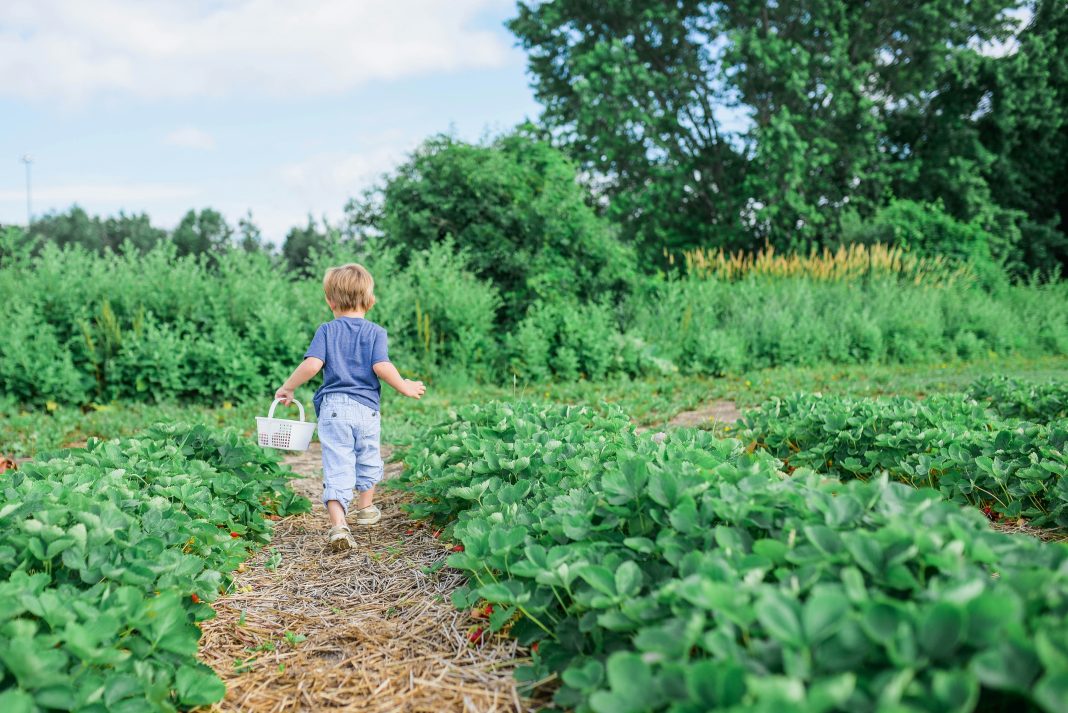Creating a family garden is a great way to introduce multiple life lessons to your little ones. You’ll be able to teach your kids about science, lifecycles, nutrition, and so much more. Depending on your gardening practices, you can also teach your kids about sustainability and how to lead a more eco-friendly lifestyle.
Environmental stewardship is essential for the next generation and starts at home. With a few tips, tricks, and techniques, you can highlight the benefit of eco-friendly practices for a home garden and the planet.
With these practices, you can foster a love of nature and a sense of responsibility toward the environment that your kids will take with them into adulthood. You don’t have to change your existing gardening habits completely, but with a few simple swaps and additions, you can do your part to help the planet and educate your kids along the way.
The benefits of eco-friendly gardening
Having a home vegetable garden is a step toward sustainability. The more food you’re able to grow for yourself and your family, the less dependent you’ll be on getting that food from the store. That can help to cut back on carbon emissions. As the demand for ingredients goes down at supermarkets across the country, less transportation will be required to ship those goods from one point to another, cutting back on emissions immediately.
Depending on your practices, eco-friendly gardening can also help to reduce water waste, encourage native wildlife, and provide your family with healthy fruits and vegetables to enjoy for months at a time. When you know exactly where your food comes from, you can feel better about eating it while teaching your kids the importance of nutrition along the way.
Gardening with kids
Gardening with your little ones requires a certain kind of balance. You should take the lead and let them know the purpose of each sustainable step. But don’t be afraid to let them get their hands dirty – literally! Gardening can be a great way to boost your child’s physical and mental development, and it’s often more kid-friendly than you might think.
Consider starting with some beginner-friendly plants and crops that will be easy for your kids to grow. Some of the best options include:
-
- Sunflowers
- Peas
- Beans
- Potatoes
- Carrots
- Radishes
- Lettuce
- Zucchini
The more successful your kids are, the more likely they’ll be to stick with gardening on a long-term basis. There’s something about seeing the process from seed to harvest that is magical for a child every time.
Setting up eco-friendly practices for your garden is another great way to get your kids excited. One of the easiest ways is to utilize rain barrels. Rain barrels come in various sizes depending on your family’s needs and can save you up to 1300 gallons of water each year.
Using rainwater to water your garden is a fantastic way to save potable water for drinking and to cut back on water waste.
Composting is another easy and effective way to fertilize your garden without using harmful chemicals naturally. Composting can be especially fun for kids because they get to toss their daily “scraps” into the compost bin. Everything from fruits and vegetables to eggshells and grass clippings can be composted, and you can use it as an opportunity to teach your kids about nutrient-rich soil and how it won’t just help your plants grow but will benefit the environment, too.
Certain plants and herbs, including basil, marigolds, lavender, and mint, will also deter bugs and pests from entering your garden. Including them in your planting process can make it easier to avoid using harmful pesticides. Plus, you’ll often end up with more usable herbs that you can incorporate into everything from your dinner dishes to your self-care routine.
An eco-friendly landscape
When it comes to eco-friendly growing practices, you don’t have to stop with your garden. Consider investing your time into a sustainable backyard the whole family can enjoy. You can completely transform your yard with plants and trees. By choosing native plants, you won’t have to water them as frequently, and you’ll encourage local wildlife to enjoy your yard, boosting the natural ecosystem in your area.
Certain trees, like the ever-popular Magnolia, will also bolster local wildlife, improving biodiversity in your community while protecting your garden from the hot sun.
Using natural practices and remedies to keep your lawn in top shape can also be beneficial for the planet. For example, when you choose to avoid any harmful chemicals in your landscaping and instead focus on natural fertilizers, you don’t have to worry about the negative effects often associated with those chemicals, including certain cancers. You might also consider a different approach to landscaping altogether, such as xeriscaping. Xeriscaping relies on native plants, rocks, and mulch to create an environment that doesn’t require consistent watering. It’s better for the environment and your utility bills.
There are so many fun and easy ways to get your kids interested in eco-friendly gardening. The more excited they are about helping the planet now, the more likely they will be to take those sustainable habits with them as they grow. It’s never too early to get them interested in gardening, so go have fun digging in the dirt together!





















